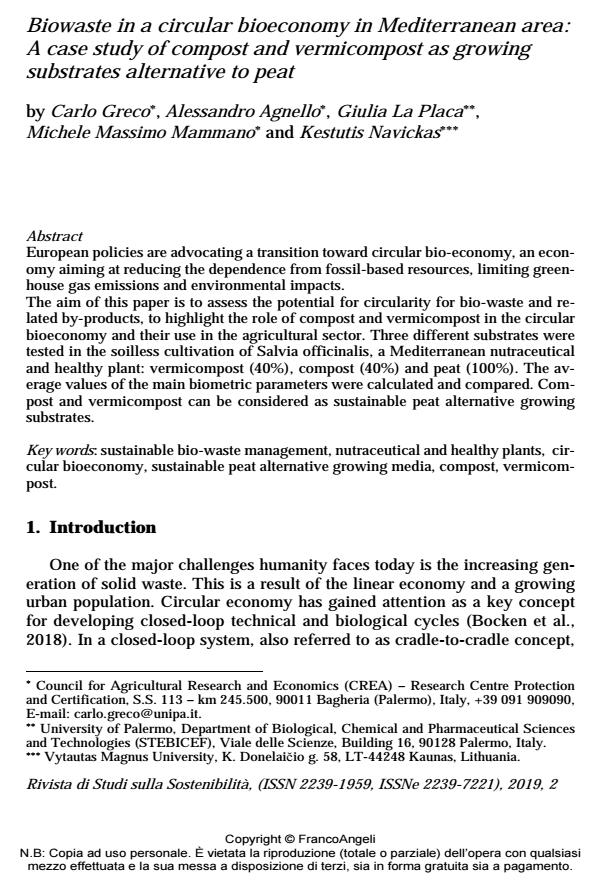Biowaste in a circular bioeconomy in Mediterranean area: A case study of compost and vermicompost as growing substrates alternative to peat
Journal title RIVISTA DI STUDI SULLA SOSTENIBILITA'
Author/s Carlo Greco, Alessandro Agnello, Giulia La Placa, Michele Massimo Mammano, Kestutis Navickas
Publishing Year 2020 Issue 2019/2 Suppl.
Language English Pages 18 P. 345-362 File size 194 KB
DOI 10.3280/RISS2019-002-S1022
DOI is like a bar code for intellectual property: to have more infomation
click here
Below, you can see the article first page
If you want to buy this article in PDF format, you can do it, following the instructions to buy download credits

FrancoAngeli is member of Publishers International Linking Association, Inc (PILA), a not-for-profit association which run the CrossRef service enabling links to and from online scholarly content.
European policies are advocating a transition toward circular bio-economy, an economy aiming at reducing the dependence from fossil-based resources, limiting greenhouse gas emissions and environmental impacts. The aim of this paper is to assess the potential for circularity for bio-waste and related by-products, to highlight the role of compost and vermicompost in the circular bioeconomy and their use in the agricultural sector. Three different substrates were tested in the soilless cultivation of Salvia officinalis, a Mediterranean nutraceutical and healthy plant: vermicompost (40%), compost (40%) and peat (100%). The average values of the main biometric parameters were calculated and compared. Compost and vermicompost can be considered as sustainable peat alternative growing substrates.
Keywords: Sustainable bio-waste management, nutraceutical and healthy plants, circular bioeconomy, sustainable peat alternative growing media, compost, vermicompost.
Carlo Greco, Alessandro Agnello, Giulia La Placa, Michele Massimo Mammano, Kestutis Navickas, Biowaste in a circular bioeconomy in Mediterranean area: A case study of compost and vermicompost as growing substrates alternative to peat in "RIVISTA DI STUDI SULLA SOSTENIBILITA'" 2 Suppl./2019, pp 345-362, DOI: 10.3280/RISS2019-002-S1022